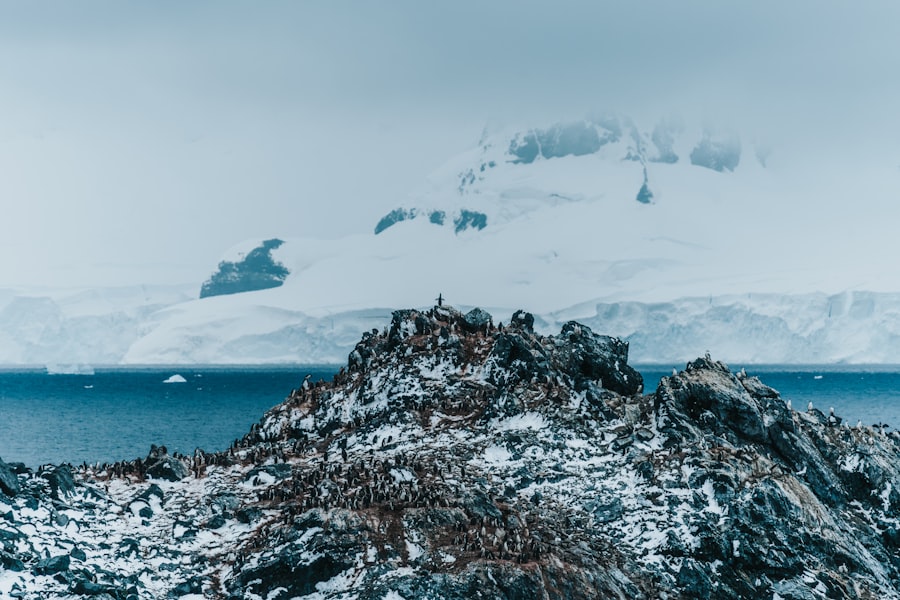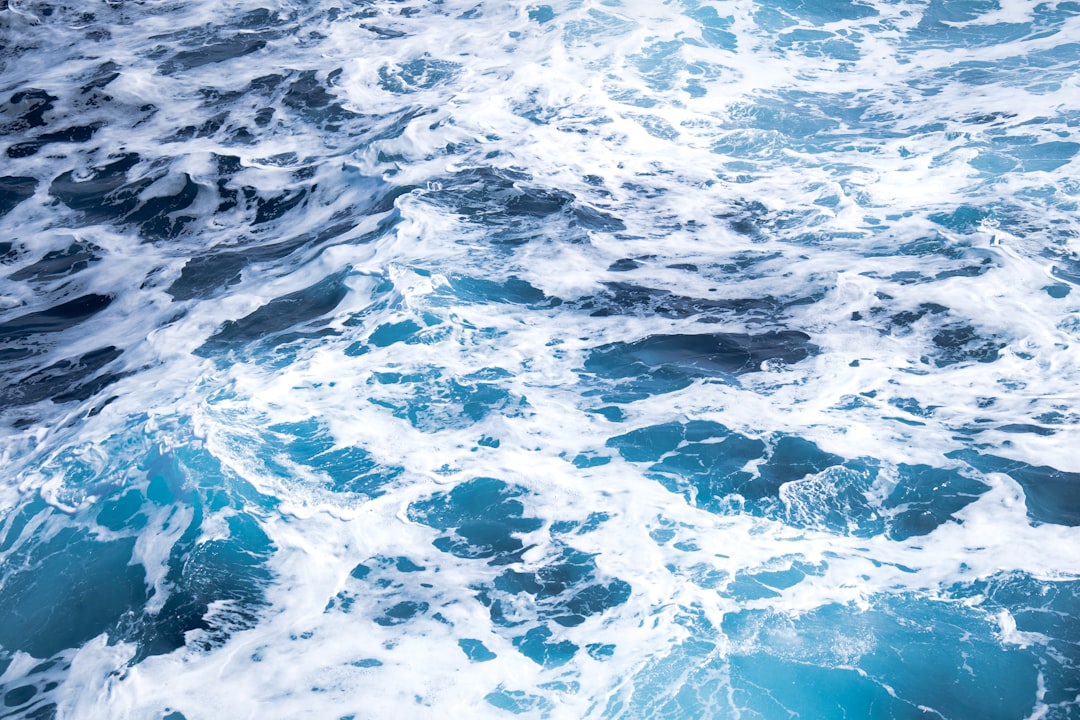The Drake Passage, a body of water that separates South America from Antarctica, is often regarded as one of the most formidable maritime routes in the world. Named after the English explorer Sir Francis Drake, who navigated these treacherous waters in the late 16th century, the passage has become synonymous with adventure and peril. Stretching approximately 600 kilometers (370 miles) at its widest point, it serves as a critical junction for ocean currents and weather patterns, making it a focal point for both scientific research and maritime navigation.
The passage is not merely a geographical feature; it embodies the spirit of exploration and the challenges that come with venturing into the unknown. For many, crossing the Drake Passage is a rite of passage, a test of endurance and resilience that beckons adventurers and researchers alike.
However, the Drake Passage is not just a gateway to the frozen continent; it is a formidable challenge that demands respect and preparation. Understanding its geography, history, and the myriad challenges it presents is essential for anyone considering a voyage through this iconic maritime corridor.
Key Takeaways
- The Drake Passage is a treacherous body of water located between South America’s Cape Horn and the South Shetland Islands of Antarctica.
- The geography of the Drake Passage is characterized by strong winds, large waves, and unpredictable weather, making it one of the most challenging maritime routes in the world.
- The history of the Drake Passage is filled with tales of exploration, shipwrecks, and scientific discovery, dating back to the 16th century.
- Navigating the Drake Passage presents numerous challenges for sailors, including rough seas, icebergs, and extreme cold temperatures.
- Safety precautions for crossing the Drake Passage include securing loose items, wearing appropriate clothing, and being prepared for seasickness.
The Geography and Weather of the Drake Passage
The geography of the Drake Passage is characterized by its deep waters and strong currents, which are influenced by the confluence of the Atlantic and Pacific Oceans. This unique positioning creates a dynamic marine environment that is both rich in biodiversity and fraught with danger. The passage is home to some of the world’s most powerful ocean currents, including the Antarctic Circumpolar Current, which flows uninterrupted around Antarctica.
This current plays a crucial role in regulating global climate patterns and is a significant factor in the weather conditions experienced in the region. Weather in the Drake Passage can be notoriously unpredictable. The area is known for its fierce storms and high winds, which can arise suddenly and without warning.
Sailors often describe the passage as having “four seasons in one day,” where calm seas can quickly transform into tumultuous waves. The average wave height can reach up to 10 meters (33 feet), making navigation particularly challenging. The combination of strong currents and volatile weather creates an environment that demands careful planning and respect from those who dare to traverse it.
The History of the Drake Passage

The history of the Drake Passage is steeped in exploration and discovery. Sir Francis Drake was one of the first Europeans to navigate these waters during his circumnavigation of the globe in the late 1500s. His journey not only opened up new trade routes but also laid the groundwork for future explorations of Antarctica.
Over the centuries, numerous explorers have followed in his footsteps, each contributing to our understanding of this remote region. In the 19th century, the passage gained prominence as whalers and sealers ventured into its icy waters in search of lucrative resources. This period marked a significant shift in human interaction with the region, as commercial interests began to overshadow pure exploration.
The discovery of Antarctica itself was closely linked to expeditions that crossed the Drake Passage, culminating in significant scientific research that continues to this day. The passage has thus played a pivotal role in shaping our understanding of both maritime navigation and polar science.
The Challenges of Navigating the Drake Passage
| Challenge | Description |
|---|---|
| Strong Winds | The passage is known for its strong westerly winds, often reaching gale force, which can make navigation difficult. |
| Rough Seas | The combination of strong winds and currents can lead to rough seas, causing discomfort for passengers and crew. |
| Narrow Passage | The Drake Passage is a narrow stretch of water between South America’s Cape Horn and the South Shetland Islands, making it challenging to navigate. |
| Icebergs | During certain times of the year, icebergs can pose a threat to ships navigating the passage. |
| Unpredictable Weather | The weather in the Drake Passage can change rapidly, making it difficult to anticipate and navigate through storms and fog. |
Navigating the Drake Passage presents numerous challenges that can test even the most seasoned mariners. The combination of strong winds, high waves, and unpredictable weather creates an environment where safety is never guaranteed. Many sailors have recounted harrowing experiences of battling fierce storms that can arise with little notice, forcing them to make quick decisions to ensure their vessels remain seaworthy.
Moreover, the passage’s remoteness adds another layer of difficulty. In case of emergencies, help may be far away, making it imperative for vessels to be well-equipped and prepared for any eventuality. The isolation of the region means that communication can be sporadic, further complicating rescue efforts should they be needed.
As such, navigating the Drake Passage requires not only skill but also an understanding of the inherent risks involved.
Safety Precautions for Crossing the Drake Passage
Given the challenges associated with crossing the Drake Passage, safety precautions are paramount for anyone embarking on this journey. Thorough preparation begins long before setting sail; it involves meticulous planning regarding weather patterns, vessel capabilities, and crew readiness. Mariners are advised to monitor weather forecasts closely and to be prepared for sudden changes that could impact their voyage.
Equipping vessels with advanced navigation technology is also crucial. Modern ships often utilize satellite communication systems and GPS technology to enhance safety during crossings. Additionally, having a well-trained crew familiar with emergency protocols can make a significant difference in ensuring safety at sea.
Life jackets, lifeboats, and other safety equipment should be readily accessible, as quick access can be vital in emergencies.
The Wildlife of the Drake Passage

The Drake Passage is not only known for its challenging conditions but also for its rich marine biodiversity. It serves as a vital habitat for various species of wildlife, including seals, whales, and seabirds. The nutrient-rich waters support an abundance of krill, which forms the foundation of the food chain in this region.
As a result, many species migrate through or inhabit these waters during different times of the year. Among the most notable inhabitants are humpback whales and orcas, which can often be spotted breaching or swimming alongside vessels crossing the passage. Seabirds such as albatrosses and petrels are also common sights, gliding gracefully over the waves in search of food.
For wildlife enthusiasts and researchers alike, the Drake Passage offers unparalleled opportunities to observe these magnificent creatures in their natural habitat.
Famous Expeditions and Explorers of the Drake Passage
Throughout history, numerous expeditions have traversed the Drake Passage, each contributing to our understanding of this remote region.
Shackleton’s journey through the passage was fraught with peril but ultimately showcased human resilience in the face of adversity.
Another notable expedition was led by Robert Falcon Scott during his quest to reach the South Pole in 1911. Scott’s journey through the Drake Passage was marked by harsh conditions and significant challenges, yet it paved the way for future explorations of Antarctica. These expeditions not only advanced scientific knowledge but also captured the imagination of generations, inspiring countless adventurers to follow in their footsteps.
Tips for Surviving the Drake Passage Crossing
For those preparing to cross the Drake Passage, several tips can enhance their chances of a safe and successful journey. First and foremost, travelers should ensure they are physically prepared for potential discomforts associated with rough seas. Taking seasickness medication before departure can help mitigate nausea caused by turbulent waters.
Additionally, dressing in layers is essential due to rapidly changing weather conditions. Waterproof gear is advisable to stay dry during unexpected rain or spray from waves. Staying hydrated and well-nourished is also crucial; maintaining energy levels can significantly impact one’s ability to cope with challenging conditions.
Lastly, fostering a positive mindset can make a considerable difference; embracing the adventure rather than fearing it can transform a daunting experience into an unforgettable journey.
The Future of Crossing the Drake Passage
As climate change continues to impact global weather patterns, the future of crossing the Drake Passage may evolve significantly. Scientists are closely monitoring changes in ocean currents and temperatures that could affect navigation routes and wildlife populations in this region. Increased shipping traffic due to melting ice caps may also pose new challenges for those traversing these waters.
Moreover, advancements in technology may lead to safer navigation methods in the future. Innovations such as autonomous vessels equipped with sophisticated sensors could revolutionize how mariners approach crossing this iconic passage. As researchers continue to study this unique environment, understanding its complexities will be crucial for ensuring safe passage while preserving its delicate ecosystems.
Personal Stories of Crossing the Drake Passage
Personal accounts from those who have crossed the Drake Passage often highlight both its beauty and its challenges. Many travelers recount moments of awe as they witnessed breathtaking landscapes and encountered majestic wildlife during their journey. However, these stories are often interwoven with tales of battling fierce storms or grappling with seasickness.
One sailor shared their experience of crossing during a particularly tumultuous storm, describing how waves towered over their vessel like mountains. Despite moments of fear and uncertainty, they found camaraderie among fellow crew members as they worked together to navigate through treacherous conditions. Such personal stories serve as a testament to human resilience and adaptability when faced with nature’s formidable forces.
The Drake Passage as a Rite of Passage
The Drake Passage stands as more than just a geographical feature; it represents a rite of passage for adventurers seeking to explore one of Earth’s last frontiers. Its challenges demand respect and preparation while offering unparalleled opportunities for discovery and connection with nature’s raw beauty. As explorers continue to navigate these waters, they carry forward a legacy steeped in history and adventure.
Crossing the Drake Passage is not merely about reaching a destination; it is about embracing an experience that tests one’s limits and fosters personal growth. Whether through tales of survival or moments of wonder at nature’s splendor, those who traverse this iconic passage become part of an enduring narrative that celebrates exploration and resilience against all odds.
The Drake Passage is notorious for its treacherous waters, often described as one of the most terrifying ocean crossings in the world. This narrow body of water between the southern tip of South America and Antarctica is infamous for its unpredictable weather and massive waves, making it a daunting route for sailors and adventurers alike. For those interested in learning more about the challenges and experiences of navigating such perilous waters, a related article can be found on MyGeoQuest. This article delves into the history and significance of the Drake Passage, providing insights into why it remains a formidable challenge for even the most seasoned mariners. You can read more about it by visiting this link.
WATCH NOW! Drake Passage: Earth’s Deadliest Waters Revealed
FAQs
What is the Drake Passage?
The Drake Passage is the body of water between the southern tip of South America and the northern tip of the Antarctic Peninsula. It is known for its rough seas and challenging sailing conditions.
Why is the Drake Passage considered a terrifying ocean crossing?
The Drake Passage is notorious for its strong winds, large waves, and unpredictable weather. These conditions can make sailing through the passage a daunting and challenging experience for even the most experienced sailors.
What makes the Drake Passage so treacherous?
The Drake Passage is located in a region where the Atlantic, Pacific, and Southern oceans converge, leading to powerful currents and intense storms. The combination of these factors contributes to the passage’s reputation for being one of the most challenging ocean crossings in the world.
Are there any dangers associated with crossing the Drake Passage?
Yes, the Drake Passage poses several dangers to ships and sailors, including rough seas, strong winds, icebergs, and the potential for extreme weather conditions. These factors can make navigation and sailing through the passage hazardous.
How do sailors prepare for crossing the Drake Passage?
Sailors preparing to cross the Drake Passage typically undergo extensive training and preparation to handle the challenging conditions they may encounter. This can include familiarizing themselves with the latest weather forecasts, ensuring their vessel is well-equipped for rough seas, and having a skilled and experienced crew on board.
Is it possible to avoid the Drake Passage when traveling to Antarctica?
While it is possible to reach Antarctica by flying directly to the continent, many expeditions and cruises to Antarctica do involve crossing the Drake Passage. However, some itineraries may take alternative routes or use more sheltered waters to minimize the impact of the passage’s challenging conditions.
